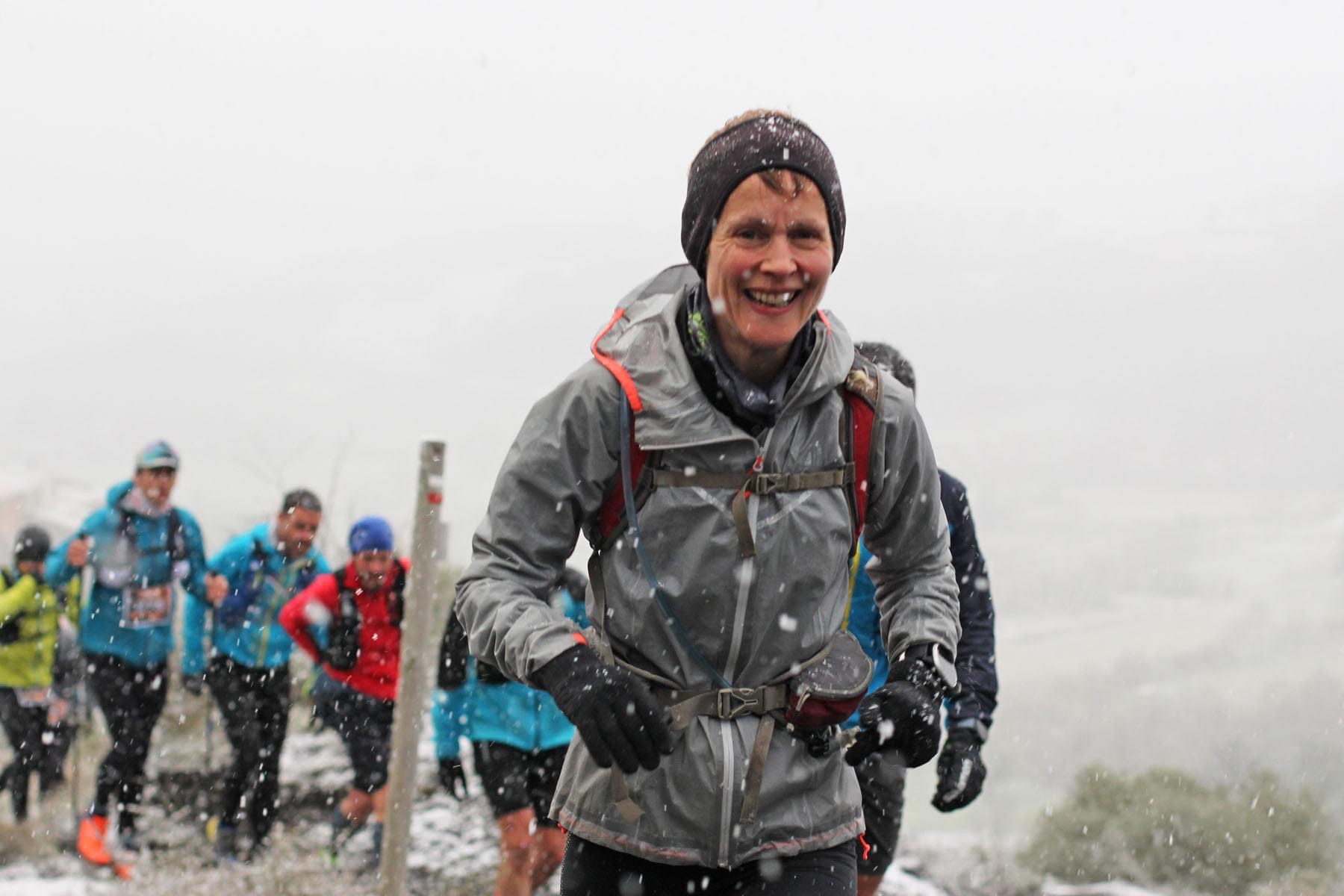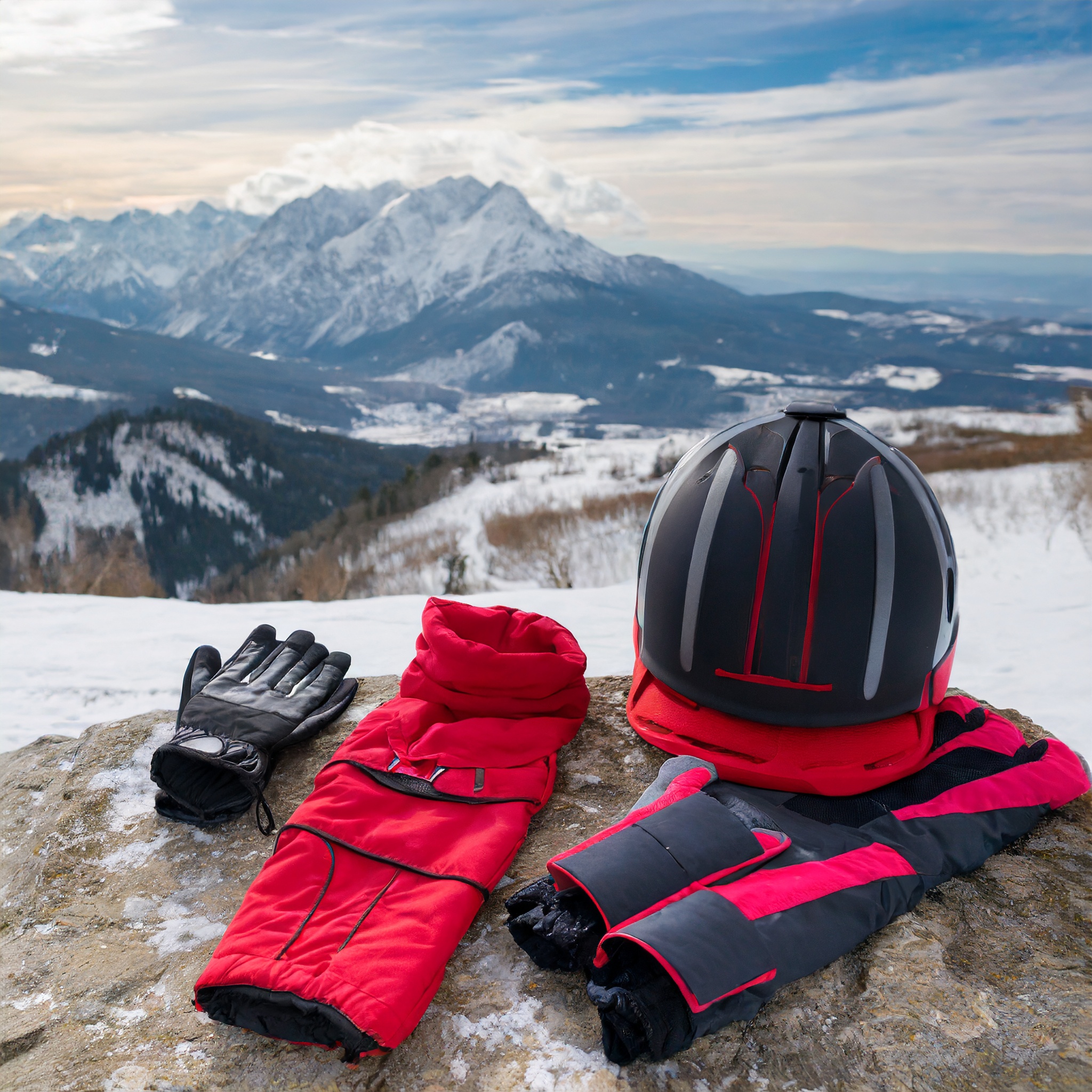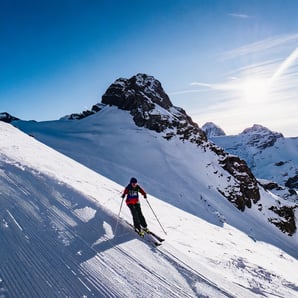How to Keep Training through the Cold Weather

As the days shorten and the weather cools in the Northern Hemisphere motivation to train can also take a dip.
So how do you ensure that you have a good block of training during the cold season so that you are ready to go for the Spring Races?
Here are a few things that I do with athletes to keep them motivated and training well so that we are not starting from scratch as the snow melts and the mountains open up to us again.
1) Prepare for the Winter
Having the right gear for winter training can make a massive difference to how comfortable you feel and how safe you are when you are out there. If you don't have it already, buying some sport specific winter gear is a good investment.

For runners this might include:
- Windproof/waterproof top layers.
- Decent base layers
- Thermal mid/top layer
- Running hats (skull type hats that don't blow off in the wind)
- Gloves (I find ski gloves work well)
- Warm socks
- Thermal and/or windproof running tights
- Reflective gear if you are running the dark.
- Decent head torch
For Cyclists this might include all the above plus:
- Windproof and waterproof overshoes
- Winter tyres for more grip on slippier surfaces.
- Winter cycling gloves
- Hand warmers and foot warmers can also help for shorter rides
- Shoes you can run in - so when you need to warm up you can get off your bike and run for a bit.
- Windproof buff
- Winter thermal cycling jacket
- Mudguards - extra weight but it will stop the muddy bottom and back...with your wider tyres you'll have more drag anyway; your cycling buddies will also thank you.
- Decent head and tail lights (you might want a power pack or dynamo to keep them going if you are planning on going long).
Of course some people just have a winter bike...
2) Anticipate and develop some motivational techniques
Having ways to deal with emotional and physical barriers is another key way you can maintain training through even the toughest of winters.
.png?width=252&height=326&name=Untitled%20(1).png)
This includes:-
- Having a good plan which includes the holiday and festive seasons so you can plan around them.
- Having some winter specific goals
- Developing some specific psychological skills to help you get up and get out to train as planned.
- Having an easily accessible plan B if extreme weather could interfere with your training plans (ie an indoor alternative).
- Arrange to meet a friend - either en route for a coffee half way round your ride or to train with. Making the commitment to train to someone else will help you stay committed to your plan.
- Have a list of the things you enjoy about winter training and remind yourself of these frequently.
- Have all the extra gear you need to hand so there are no barriers to you starting your training (e.g. have the bike ready on the trainer; have a hook by the door with your winter gear to put on).
- Organise a post workout treat (a nice tea bubbling away in the slow cooker ready for when you get back; a warm shower; your favourite post workout snack).
- If you have the time and money some people find a break abroad to do some warm weather training can help break up the long winter.
3) Develop a 'winter routine.'
Routine is key to keeping up training frequency and often the summer routines don't work in winter, either because our usual trails and routes are full of snow or it's simply too dark and icy to train safely.
It can be useful to have a 'winter routine' to fall back on that you know works for you and your lifestyle. Once you know and have established your routine it is far easier to overcome the barriers of the cold and dark.
Some examples of things my athletes do are:
- Train at lunchtime when it's light and usually the warmest part of the day.
- Develop some lower lying routes for training where snow interference is minimal
- Switch to indoor training during the week on the treadmill or trainer
- Have a winter focus like cyclo-cross or cross country leagues; these don't have to be taken too seriously but provide the impetus to train and can work as a substitute for a hard session at the weekends.
- Take up some night running/mountain biking if possible and safe to do so. The added challenge of night running/riding can add interest and a new focus; there may even be some night races in your local area to take part in.
4) Focus on strength
 Whilst not all endurance athletes love strength workouts, this can be a good thing to focus on during the winter months when being inside can seem more attractive than training outside in the cold, dark and wet/ice/snow.
Whilst not all endurance athletes love strength workouts, this can be a good thing to focus on during the winter months when being inside can seem more attractive than training outside in the cold, dark and wet/ice/snow.
Whether you choose to go to a gym, join a class or do a home workout focussing on building your strength with two or three sessions per week at this time of year can pay dividends in the summer when you can cut back to a maintenance phase and enjoy being outside in the sun.
You can check out my strength training blog here for more details.
5) Cross Training

Cross training can be a great way to adapt your training to the colder weather conditions. It can also provide you with a physiological and mental break from your key sport whilst enabling you to maintain some aerobic fitness. Some sports in particular are very complementary and you may find you make some fitness gains which cross over nicely.
Examples of sports that complement each other are:
- Skating and cycling/running
- Skiing (downhill or cross country) and running
- Raquettes (snow shoe hiking) and running
- Mountain biking and mountain running and/or road cycling
- Cyclo-cross and running/road cycling
- Running and cycling
- Cross Trainer (Eliptical) and Running
- Spinning and cycling and/or running
Swimming is also great as a non weight bearing exercise to do indoors that works the whole body.
6) Create some 'Winter Goals'
Having some specific goals for the winter will help keep you focussed and on target, especially if you can see a strong link between these and your summer goals. Some good examples that I have used in the past are:
Increasing average cadence (bike or run) to a certain amount - this can involve 2 or 3 indoor or outdoor rides/runs based on cadence rather than power or speed/pace. This will make you more efficient and economical and provide a great base for quality speed work in the spring.
Increase aerobic efficiency - this can be achieved with 3 or more strictly zone 2 sessions which can be done inside or outside; they don't have to be long, just enough for some training stimulus.
Increase running economy - this can be achieve by doing some running drills for 5 to 10 minutes 2 to 3 times per week; you can check out my video here for more information.
7)Base Winter Training versus Inverted Periodisation
Traditionally winter time has been the time to 'get the long easy miles in' creating a strong endurance base from which to then add in speed as you near your key events. For some people this can be impossible to do due to weather conditions and inaccessibility of the trails (unless you really love a backyard ultra).
In these cases an inverted periodisation can work well, especially for ultra events. Working on high end speed/power on the track or on the trainer can be far more realistic in winter time; they provide structure and interest to indoor workouts and keep the outdoor sessions short so you can keep warm.
As the days lengthen you can then work on your longer intervals around your Lactate Threshold/Functional Threshold Pace/Power. Finally, in the summer you build your zone 2 endurance when it's easier to spend long days on the trails. As you race your ultra event mostly in zone 2 this still follows the premise of becoming more specific the closer to the race you get.
If you are not sure what kind of winter training plan might work for you, why not book in for a consultation with one of our coaches; you will get an overview of your training files, some insight into your current fitness and how you can best progress throughout the winter period based on your individual needs and goals.
Additional Questions
Can I just take the winter off?
3 months off training is a long time and whilst this can seem like a practical solution it's usually better to try and keep doing a little bit of maintenance training so you are not starting from zero in the spring. Even just doing some short sessions 2 to 3 times a week can help maintain a bit of fitness whilst still giving you a break from the intense build up to a key race. That being said, a couple of weeks to a month off can be a good way to end the season and it can be practical to plan this round the busy festive period if that suits you.
Tags:
cycling, running, Mountain Running, base training, Cycle Training, Endurance Training, Coaching, Mountain Biking, trail running, ultra runningNovember 15, 2023


Comments